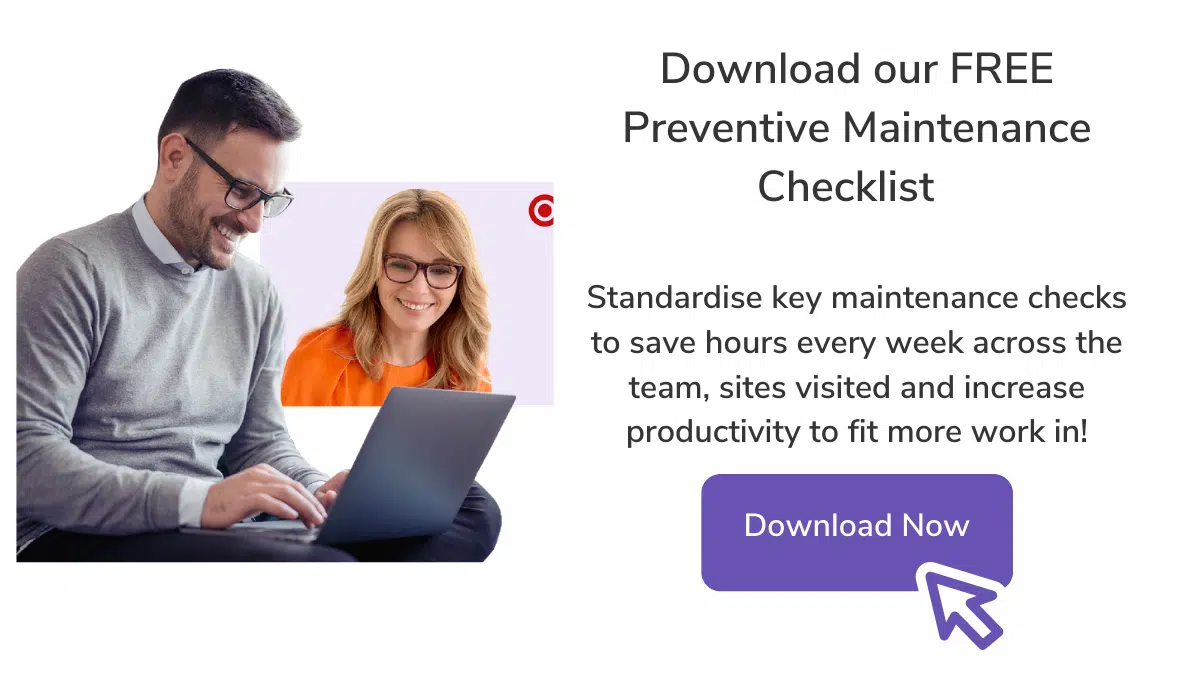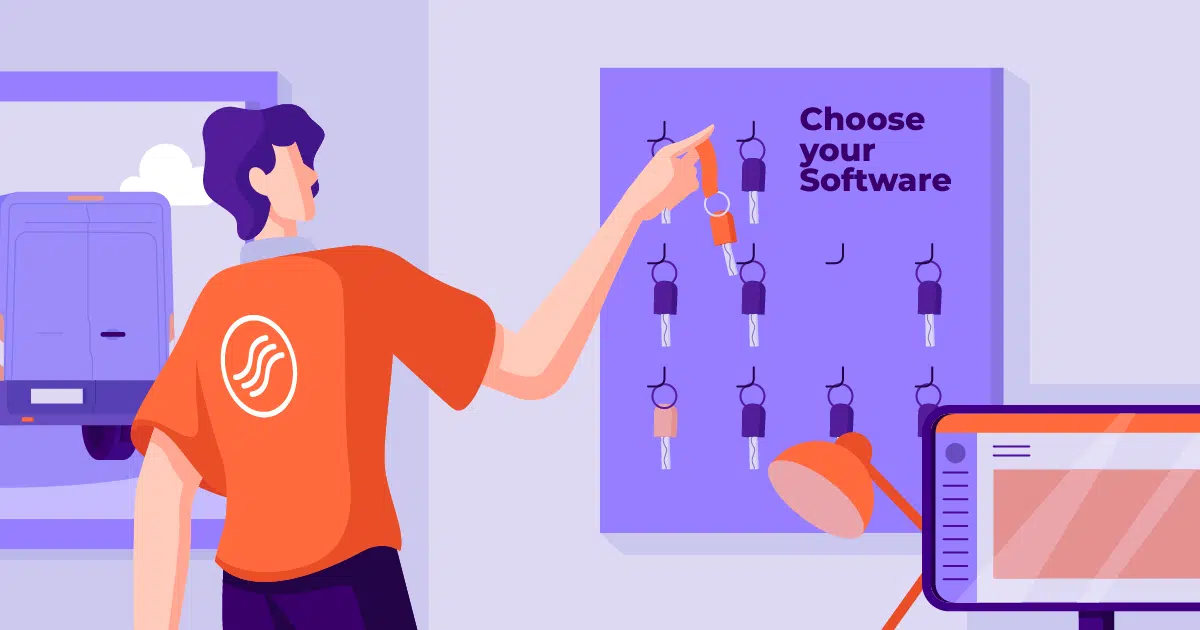Commercial Refrigeration Preventive Maintenance
Creating the perfect preventive checklist and great preventive maintenance software go hand in hand. For your commercial refrigeration systems, having a checklist in place can add consistency into your business and supply your technicians with a solid structure.
Nothing is more frustrating than asset breakdowns at the worst time (usually when you’ve got a full week of jobs booked in). With regular maintenance, you can help prevent untimely interruptions to your schedule by catching any issues before they evolve. A checklist in your business is the best way to make sure your customer’s assets are getting the care they need to maintain a high level of performance.
The benefits of preventive maintenance can help your business improve customer relationships, boost asset lifespans and avoid unplanned downtime. We will take you through the steps you need to create your ultimate preventive plan and breakdown how to start your maintenance checklist.
7 Tasks You Should Include In Your Preventive Maintenance Checklist For Commercial Refrigeration
Whether you have a preventive or breakdown maintenance system, you need a good checklist under your belt. While your checklist and maintenance will vary from asset to asset, there are some key steps that should be included in each checklist.
Your planned maintenance checklist should ideally include:
1. A Thorough Equipment Clean
A thorough inside and out clean is always essential in any regular maintenance checklist. Ideally this cleaning step is done in your daily or weekly maintenance to gain the best results.
This is a little but important step as built up grime or debris can cause airflow issues, mould growth and food contamination. This can cause a failed health inspection if not reconciled.
2. Temperature and Defrost Settings Check
Checking temperature and defrost capabilities is a simple but important step in for your refrigeration unit. In your maintenance program you want to include this on a weekly basis for best results. If your temperature has fallen to a lower setting than required, your asset will have to work harder to compromise the temperature difference. Over prolonged periods, this can shorten the lifespan of your assets and cause hefty power bills. If your temperature is incorrect your customers will also have issues with excessive ice formation or spoilage. Similarly, checking that your defrost is working to schedule is important to avoid overworking your asset.
3. Boost Your Airflow
Both interior and exterior airflow are important for a refrigeration unit. Without correct airflow, system failure will become inevitable and reduce the performance of your refrigerator. In your regular maintenance you need to make sure to check exhaust vents and air intake are free of blockages. With reduced airflow, your system will have to work harder to keep your asset within the correct temperature range and consequently this will increase energy costs.
4. Test The Interior Lights
Ensuring that your refrigerator lights shut off when your door is closed is another simple but important step. If a customer’s refrigerator light is faulty and doesn’t shut off, it will generate more heat. Your asset will have to work overtime to combat this excess heat and can again cause increased energy costs.
5. Check For Leaks And Test Seals
Wear and tear can result in faulty seals and leaks in your system. If you have issues with your door gaskets or door seals on your refrigeration unit, you will find you have escaping cool air. While this can be sometimes fixed with a little silicone caulk, this is an issue that needs to be regularly checked in your maintenance.
6. Check Coils
Completed on a monthly to six-monthly basis, cleaning the coils in your refrigeration equipment is vital in avoiding unplanned downtime. In your service, you should remove built up grime and debris that will cause your system to over work to compromise. When your evaporator coils are left dirty, you will find your unit is more likely to get damaged and result in costly repairs or eventually system failure.
7. Inspect Fan Blades
Next, remember to check your fan blades. Your fan blades will usually need a clean to ensure your fan motor isn’t working double time to comprise for excess grime and dust. Usually this is a monthly job and will involve checking all fixings are tight after you clean.
While your commercial refrigeration equipment maintenance will vary, having these 7 steps in your workflow will ensure you have a solid structure to provide your technicians with.
Refrigeration Equipment Checklist Example:
To create your job estimate template, you need a general idea of what you will be including in your servicing so you can accurately schedule technicians and invoice your customers. An example of a basic checklist for a refrigeration unit would look like:
- Check external unit for debris build up or leaks
- Check drain lines for blockages
- Degrease condenser coils
- Check thermostat and ensure temperature is within correct range
- Inspect door gaskets and hinges
- Check defrost timer
- Check door seals
- Ensure the suction line is correctly insulated
- Inspect oil motors – if applicable
- Check for wire fraying
- Inspect compressor
- Check for any signs of corrosion
Ice Machine Equipment Checklist Example:
When tracking your assets, your ice machines need to have a regular maintenance schedule to avoid problems from developing. For ice machines, a typical checklist will look like:
- Check for debris build up
- Clean bin drain (preferably pressure wash)
- Sanitize bin
- Check ice level probe – adjust as needed
- Wash evaporator
- Check for brown slime build up
- Check for unpleasant smells that can be signs of bacterial or yeast growth
- Replace water filters
- Check temperature levels within desired range
If left unattended to, ice machines can develop bacterial growth that will fail a health inspection and hinder asset performance.
The Importance Of Preventive Maintenance
With preventive maintenance work order management you can reduce your unplanned downtime, reduce power consumption, extend refrigeration life spans and avoid costly repairs.
When you have checklists as a part of your job site management, you bring more consistency into your workflow and have the assurance that all your team is on the same page.
In commercial refrigeration maintenance, you can keep an eye out for signs of defects before they result in asset downtime.
For more checklists see FieldInsight’s blog The Ultimate Air Compressor Checklist.
Your Refrigeration Maintenance and FieldInsight
With Field service automation in your business, you can ensure all your refrigeration units are in peak working condition.
When you have preventative maintenance software like FieldInsight at your back, you can focus on boosting your workflow without the extra admin hours. Book a demo today to find out more about what FieldInsight can do for your business.
What You Should Do Now
- Book a Demo. You’ll be in touch with an automation expert who has worked in this space for over 5 years, and knows the optimal workflow to address your needs.
- If you’d like access to free articles about managing HVAC workflows, go to our blog.
- If you know someone who’d enjoy reading this page, share it with them via email, Linkedin, Twitter, or Facebook.




